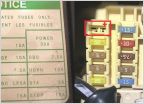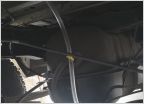-
Welcome to Tundras.com!
You are currently viewing as a guest! To get full-access, you need to register for a FREE account.
As a registered member, you’ll be able to:- Participate in all Tundra discussion topics
- Transfer over your build thread from a different forum to this one
- Communicate privately with other Tundra owners from around the world
- Post your own photos in our Members Gallery
- Access all special features of the site
2006 Voltage Gauges Batt Fuse and AC Cycling
Discussion in '1st Gen Tundras (2000-2006)' started by esco5501, Apr 25, 2023.


 New headlight bulbs (Hella H4 100/80W)
New headlight bulbs (Hella H4 100/80W) Truck Stereo
Truck Stereo Tapping ACC/IGN and BATT power from fuse box?
Tapping ACC/IGN and BATT power from fuse box? 2006 4x4 sr5 - leveling kit questions
2006 4x4 sr5 - leveling kit questions Rear Differential Breather Mod (pics)
Rear Differential Breather Mod (pics) Center Console Lock Box (Safe) Project
Center Console Lock Box (Safe) Project













































































